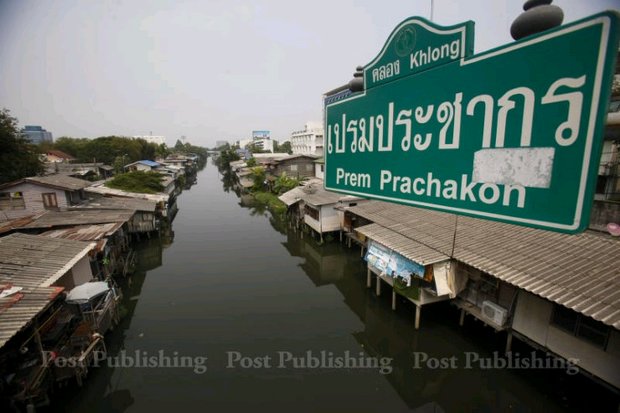
The National Water Resource Commission (NWRC) has given the green light to a 13-billion-baht plan to combat drought and floods as well as improve drainage and water quality in Thailand's key interprovincial canal, Klong Prem Prachakorn.
Its approval, which has come as many parts of the country brace for the looming summer water scarcity, will be forwarded to the cabinet for final approval.
About 4.4 billion baht will be used to improve Klong Prem Prachakorn, a 50-kilometre canal linking Bangkok, Pathum Thani and Ayutthaya.
The canal, which also runs past Government House, is connected to Klong Phadung Krung Kasem, the capital's outer moat that flows into the Chao Phraya River.
"We want to restore Klong Prem Prachakorn to improve drainage and water quality," Office of National Water Resources's (ONWR) secretary-general Somkiat Prachamwong said Monday after the commission's meeting, chaired by Prime Minister Prayut Chan-o-cha.
The Royal Irrigation Department began restoration efforts last March when it, together with the private sector input, cleared up 27 tonnes of rubbish from a 1.4-km section in northern Bangkok.
They also dredged part of the canal in the city's Chatuchak area.
Other projects, to be carried out under the plan include the restoration of Ratchanok lake in Phitsanulok (1.4 billion baht) and Boraphet lake in Nakhon Sawan (5.7 billion baht).
"The aim is to increase their storage capacities to protect nearby villages against drought and inundation," Mr Somkiat said.
The rest of the budget (1.7 billion baht) will be spent on flood-prevention measures in Chumphon, which will benefit more than 16,000 families and also prevent the incursion of salt water onto farmland.
The ONWR is also dealing with the impact of El Nino-induced drought in many parts of the country.
Also known as the ocean warming effect, Thailand is currently facing a "light El Nino", Mr Somkiat said, but this will be enough to cause unusually low rainfall in all regions from March to April.
Rainfall in the country over the next two months will be 5-10% lower than usual, with the driest areas being in the North, according to the office's estimate.
His office is now monitoring provinces prone to water scarcity.
They are Chiang Mai, Nakhon Sawan, Kanchanaburi, Ratchaburi, Chaiyaphum and Nakhon Ratchasima.
Up to 200 householders in three villages in tambon Nong Manao in Nakhon Ratchasima's Khong district are bearing the brunt after a public lake dried up, causing a halt to the production of tap water.
"We have to spend about 300 baht a week buying water," said Manop Chatnok, a village resident.
